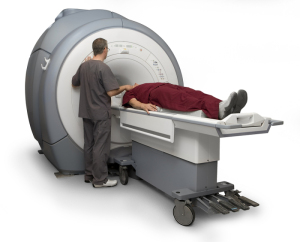by
Lauren Dubinsky, Senior Reporter | June 07, 2016
A new clinical trial underway in Canada will investigate whether MR is feasible to replace the current standard of care to diagnose prostate cancer. The Movember Foundation, the Ontario Institute for Cancer Research (OICR), and Prostate Cancer Canada provided $3 million in funding for this research.
“The question is: if someone has a negative MR — do they still need a biopsy?,” Dr. Laurence Klotz, lead researcher from the Sunnybrook Research Institute in Toronto, told HCB News. “If you can show that the MR is good enough to be able to say they are very unlikely to have significant cancer then that would be a huge step forward.”
Prostate cancer is currently diagnosed with trans-rectal ultrasound (TRUS)-guided biopsy of the prostate, in most cases after a prostate specific antigen (PSA) test. Since it’s not a targeted procedure, it can require between 10 and 12 biopsy samples and it can potentially lead to side effects like infection or bleeding.



Ad Statistics
Times Displayed: 130299
Times Visited: 7399 MIT labs, experts in Multi-Vendor component level repair of: MRI Coils, RF amplifiers, Gradient Amplifiers Contrast Media Injectors. System repairs, sub-assembly repairs, component level repairs, refurbish/calibrate. info@mitlabsusa.com/+1 (305) 470-8013
MR may be able to identify which patients should undergo a biopsy, and allow for more targeted biopsies of only the areas suspected of being cancerous. If MR proves to be useful, then 250,000 men per year in the U.S. and Canada will avoid unnecessary biopsies.
“I think there is a very strong driver to switch [to MR], but people are somewhat afraid that if they don’t do the biopsy and the MR has missed a significant cancer, then the patient will have an adverse outcome,” said Klotz.
He believes that high-quality data showing that MR can effectively replace TRUS-guided biopsies is what is needed for people to be less apprehensive. Once the PRECISE trial is completed in about three years, he’s hoping to have that data.
But this isn’t a black or white issue. If the patient is at low risk of developing prostate cancer and has a mild elevation of PSA with a negative MR exam then the biopsy can be skipped, but if the patient has a high PSA and other risk factors such as family history then they will most likely need a biopsy regardless of the MR exam.
The downside of MR is that there aren’t as many experts at interpreting MR that will be needed if it becomes the standard of care. Academic medical centers have the expertise that is needed, but at small hospitals the quality of interpretation may not be comparable.
Cost is also a major hurdle, especially in Canada. In Ontario, a patient can’t get an MR paid for unless they have had a prior negative biopsy, so that will need to change in order for MR to become the standard of care.
“We could have the best data in the world, but if the insurance folks drag their heels before they will agree to fund it, that also will slow things,” said Klotz.
Klotz and his colleagues are working to accrue 500 patients for the trial. The data management and analysis will be conducted by the Ontario Clinical Oncology Group in the Escarpment Cancer Research Institute.

